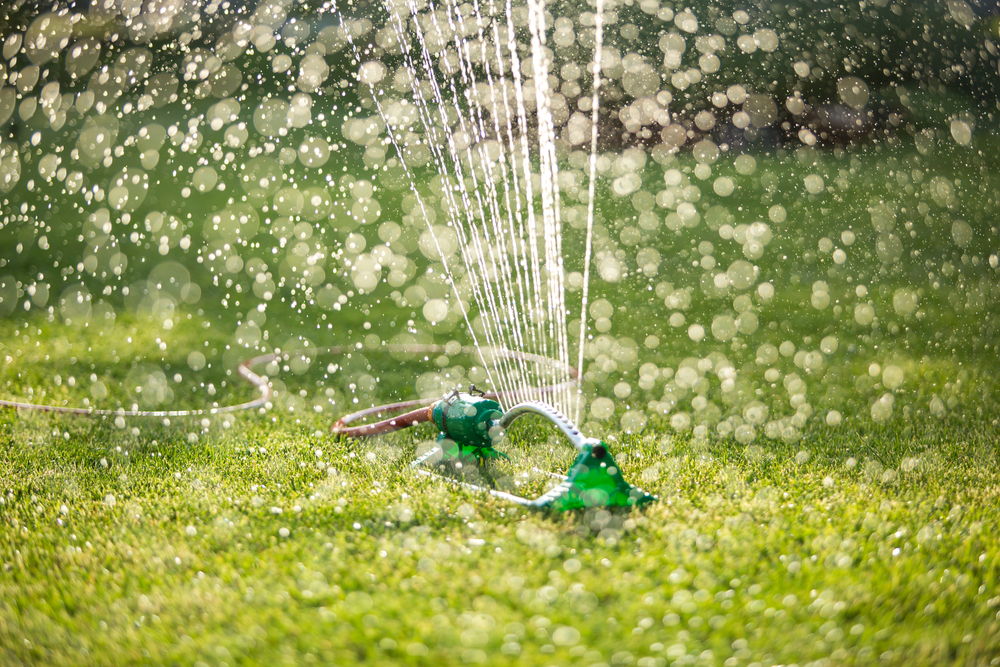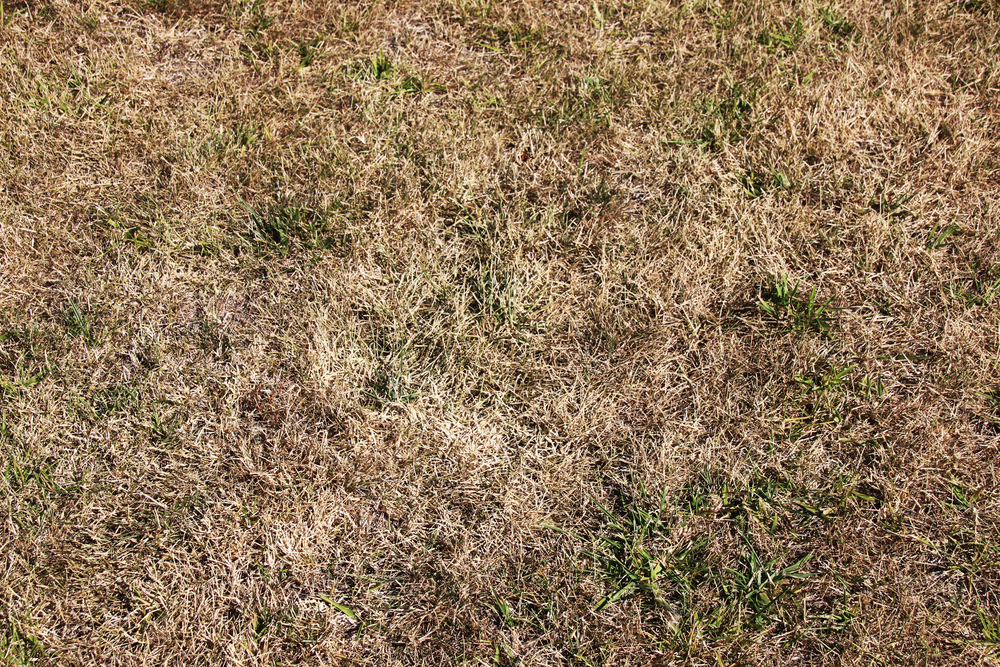
With the arrival of summer and warmer temperatures, if you have a lawn that you have to care for, a question that often arises for home owners is “how often and how much should I water my lawn?”
This is a very good question as in order to avoid lawn disease, pests, weed infestations and more, it is important to properly care for your lawn, particularly when it comes to watering.
It is important not to under water your lawn, but it is also equally important not to over water your lawn. Both can have detrimental effects on your lawn’s health and overall condition. Following are general watering guidelines followed by signs of over and under watering.
General Watering Guidelines
When it comes to watering your lawn, here are some general guidelines you should follow to ensure you’re providing the right amount of water:
1. Water deeply
It’s better to water your lawn deeply and infrequently rather than shallowly and frequently. Deep watering encourages the roots to grow deeper into the soil, making the grass more drought-resistant. Aim for watering to a depth of about 6 inches.
2. Water in the early morning
The best time to water your lawn is in the early morning, ideally between 4 a.m. and 8 a.m. During this time, the temperatures are cooler, and the wind is usually calm, which allows for better absorption and reduces water loss due to evaporation.
3. Watering frequency
The frequency of watering depends on several factors such as grass type, soil type, climate, and season. As a general rule, most lawns require about 1 inch of water per week, including rainfall. However, you should adjust this based on your specific conditions. During hot and dry periods, you may need to increase the frequency of watering.
4. Use a rain gauge or empty cans
Place rain gauges or empty cans throughout your lawn to measure how much water is being applied. This helps you determine when you’ve reached the desired depth of watering. Once you know how long it takes to apply 1 inch of water, you can set your watering duration accordingly.
5. Be mindful of local regulations
Some areas may have watering restrictions or guidelines due to water conservation efforts or drought conditions. Be aware of any local regulations and adhere to them when watering your lawn.
6. Watch for signs of overwatering or underwatering
Pay attention to your lawn’s condition to identify signs of overwatering or underwatering. Overwatering can lead to shallow root growth, disease, and weed problems, while underwatering can cause stress and damage to the grass. Adjust your watering schedule accordingly if you notice any issues.
Please note that these guidelines are general recommendations, and you should also consider the specific needs of your lawn, soil type, grass species, and local climate conditions.
Signs of Overwatering Your Lawn

Here are some signs that may indicate you are overwatering your lawn:
1. Spongy or mushy feel
If your lawn feels excessively soft, spongy, or squishy underfoot, it may be a sign of overwatering. The soil becomes waterlogged, and the excess moisture prevents proper air circulation.
2. Persistent standing water
Puddles or areas of standing water that persist long after irrigation or rainfall indicate an excess of water. Poor drainage can contribute to overwatering and may lead to waterlogged conditions.
3. Fungus and disease issues
Overwatered lawns are more susceptible to fungal diseases such as root rot, brown patch, or dollar spot. If you notice unusual patches of discoloration, mold, or excessive thatch, it could be a result of excessive moisture.
4. Yellowing or wilting grass
While it may seem counterintuitive, overwatering can cause grass blades to turn yellow or appear wilted. This is because the excessive moisture leads to shallow root growth and reduced oxygen supply to the roots.
5. Weed growth
Overwatering can promote the growth of weeds, as they often thrive in moist environments. If you notice an increase in weed population despite your efforts to control them, it could be a sign of overwatering.
6. Increased pest activity
Excessive moisture can attract pests, including insects and certain types of lawn-damaging organisms. If you observe a surge in pest activity despite appropriate pest control measures, overwatering may be a contributing factor.
7. High water bills
If you notice a significant increase in your water bills without a corresponding improvement in the health of your lawn, it could be an indication of overwatering.
To avoid overwatering, it’s important to follow proper watering practices, taking into consideration factors such as soil type, grass species, climate, and rainfall patterns. Water deeply and infrequently, allowing the top few inches of soil to dry out between waterings. Monitor your lawn’s needs and adjust watering accordingly. Proper lawn care practices, including mowing at the appropriate height and maintaining good soil health, can also help your lawn better tolerate moisture stress and reduce the risk of overwatering-related issues.
Signs of Underwatering Your Lawn

Here are some signs that may indicate you are underwatering your lawn:
1. Dry and brittle grass
Underwatered grass often becomes dry, brittle, and straw-like in appearance. The blades may curl or fold inward in an attempt to conserve moisture.
2. Fading color
The grass may lose its vibrancy and start to appear dull or pale. It may take on a grayish or bluish tint as a result of water stress.
3. Slow or no recovery
If footprints or mower tracks remain visible long after being made, it suggests that the grass is not bouncing back due to insufficient water. Underwatered lawns struggle to recover from stress.
4. Thirsty soil
Check the soil moisture by inserting a screwdriver or a soil probe into the ground. If it is difficult to penetrate the soil or if it feels dry several inches down, it indicates inadequate watering.
5. Patchy or uneven growth
Areas of the lawn may exhibit uneven growth patterns, with some patches appearing healthier than others. Underwatered areas may have stunted or slower growth compared to the rest of the lawn.
6. Increased pest activity
Underwatered lawns can become stressed and more susceptible to pest infestations. Look out for signs of pests such as increased insect activity, visible damage, or dying patches of grass.
7. Shallow root growth
Insufficient water can cause the grass roots to remain close to the surface instead of reaching deeper into the soil. This can make the lawn more vulnerable to drought stress and other environmental pressures.
To address underwatering, it’s important to adjust your watering practices to meet the needs of your lawn. Water deeply and infrequently, ensuring the water penetrates the root zone of the grass. The exact watering frequency and duration depend on factors such as soil type, grass species, climate, and season. Regularly monitor the soil moisture levels and adjust your watering schedule accordingly.
It’s worth noting that water conservation is also important, so be mindful of local water restrictions and use efficient irrigation methods such as drip irrigation or sprinklers with adjustable settings. Additionally, maintaining proper lawn care practices like appropriate mowing height and adequate soil nutrition can support the overall health and resilience of your lawn, helping it better tolerate water stress.
For more lawn watering tips visit:
City of Calgary’s website: Watering 101 – Established, Mature Landscaping
The City of Red Deer, Your Yard
If you have any questions or concerns about your lawn, please feel free to contact our team of lawn care professionals in Calgary or Red Deer and they’d be happy to help answer any questions that you may have.

2 Comments